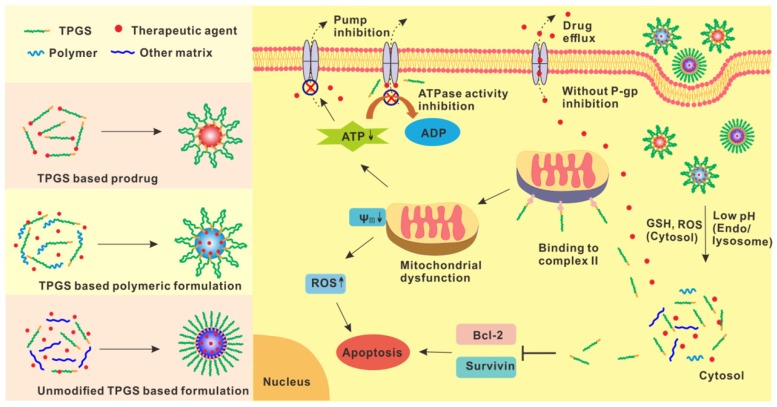Figure 1.
Scheme of TPGS for P-gp inhibition and selective antitumor effect in drug delivery. TPGS can be easily conjugated with polymers or therapeutic agents to form TPGS based polymers or prodrugs. The resultant structure can further self-assemble into nanoparticles. Unmodified TPGS can also cooperate with other materials to form nanoformulations. After internalization by cells, the nanoparticles can be degraded in response to the specific intracellular environment (e.g. pH, GSH and ROS) to release the therapeutic agents and TPGS. Without P-gp inhibition, the drugs can be rapidly pumped out to the extracellular environment. The dissociated TPGS can bind to the mitochondrial respiratory complex II and induce mitochondrial dysfunction, resulting in the decreased mitochondrial membrane potential and increased ROS generation for cell apoptosis, and reduced ATP level for P-gp inhibition. Besides, TPGS can also inhibit the substrate induced ATPase activity to further overcome MDR. With P-gp inhibition, the intracellular accumulation of therapeutic drugs can be significantly enhanced. Meanwhile, TPGS can inhibit Bcl-2 and Survivin to promote cell apoptosis.

